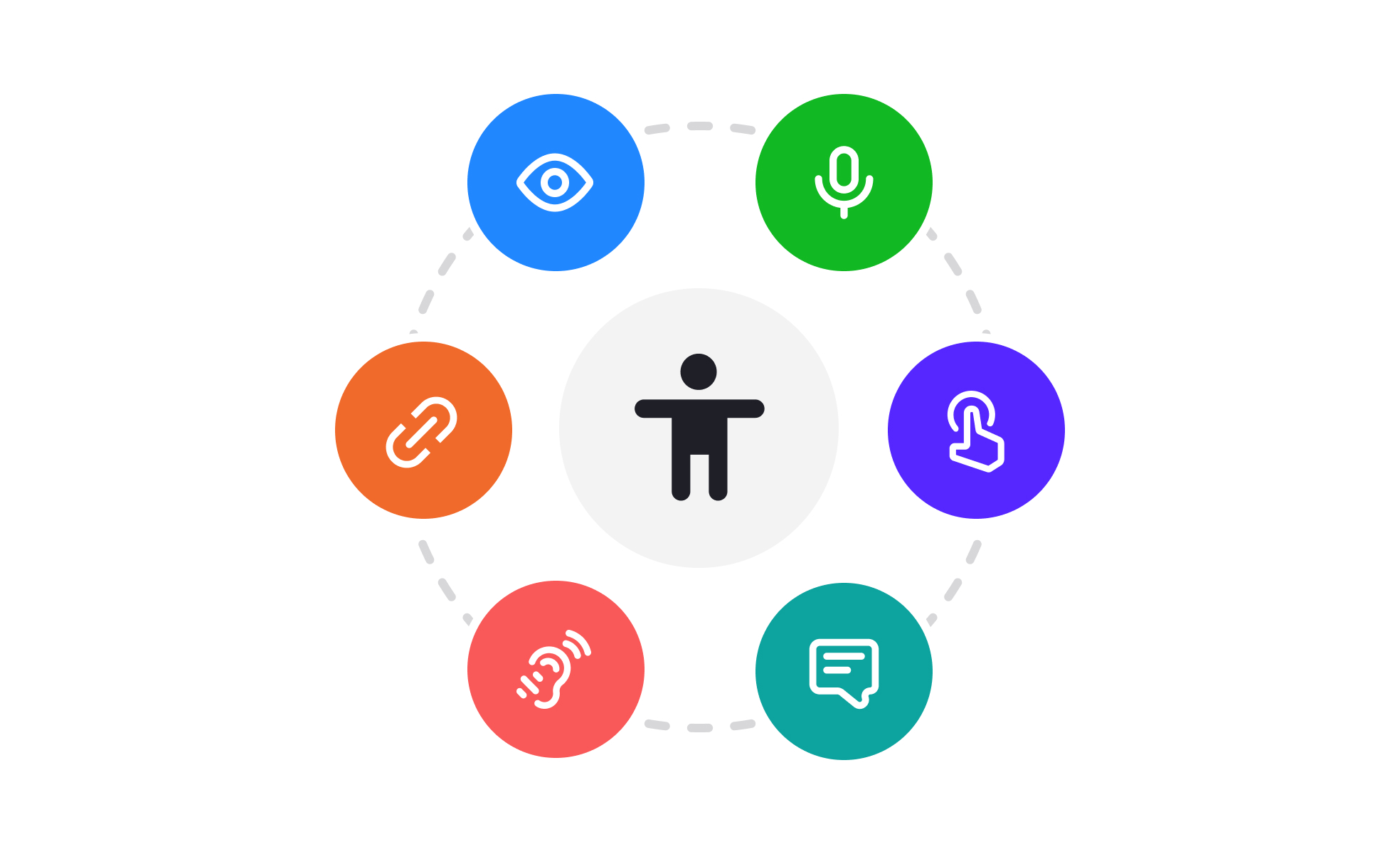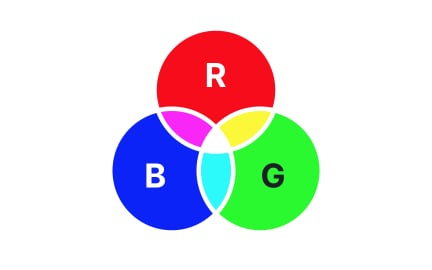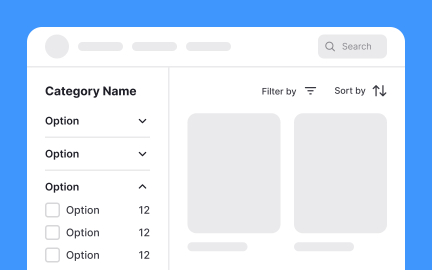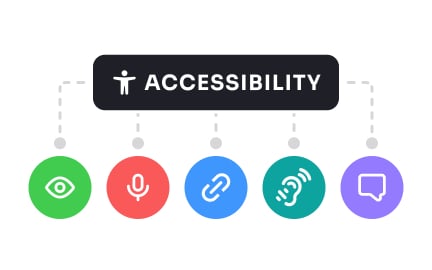Accessibility
Accessibility ensures digital products are usable by people with disabilities, improving inclusion, compliance, and overall user experience.

What is Accessibility?
Web accessibility means building digital products that everyone can use effectively, including people with disabilities. This covers visual impairments (blindness, color blindness), hearing difficulties (deafness, partial hearing loss), motor challenges (limited hand mobility), and cognitive differences (dyslexia, attention disorders).
Accessibility involves multiple approaches: screen reader compatibility, keyboard navigation, color contrast optimization, captioned videos, and clear content structure. Standards include WCAG guidelines, ADA requirements, Section 508 compliance, and international accessibility frameworks.
How Product Teams Build Accessible Experiences
Product teams integrate accessibility throughout development rather than treating it as an afterthought. This systematic approach reduces costs while ensuring comprehensive coverage.
Design phase integration
Accessibility requirements become part of initial specifications instead of retrofit additions. Microsoft's inclusive design toolkit helps teams consider diverse abilities during early concept phases, preventing expensive corrections later.
Development workflow integration
WCAG 2.1 AA compliance integrates into definition-of-done requirements. Automated testing catches roughly 30% of accessibility issues during development, while manual testing addresses contextual and usability concerns.
User testing inclusion
Teams regularly include disabled users in testing cycles to identify real usage patterns and barriers. Apple conducts systematic accessibility reviews with diverse user groups to ensure products work effectively with assistive technologies.
Performance measurement
Accessibility metrics integrate with traditional KPIs. Organizations track keyboard navigation success, screen reader compatibility, and disabled user satisfaction alongside conversion rates and engagement metrics.
Essential Accessibility Standards & Checklist
WCAG 2.1 AA core principles:
- Perceivable: Information presented in multiple ways users can access
- Operable: Interface functions work for all users regardless of input method
- Understandable: Content and navigation are clear and predictable
- Robust: Content works across various assistive technologies and browsers
Practical compliance checklist:
- Color contrast meets 4.5:1 ratio for normal text, 3:1 for large text
- All images include meaningful alternative text descriptions
- Form elements have associated labels and clear error messages
- Keyboard navigation reaches every interactive element
- Focus indicators are clearly visible during keyboard navigation
- Page structure uses logical heading hierarchy (H1, H2, H3)
- Screen readers can access and announce all dynamic content
- Video content includes accurate captions and transcripts
Tools like Axe, Lighthouse, and WAVE check for common accessibility issues.
No, it applies to all digital products, including apps and software interfaces.
Yes, in many regions, accessibility is enforced by law (e.g., ADA in the U.S.).
Recommended resources
Courses

UX Writing

Accessibility Foundations

HTML Foundations
Lessons

UX Design Principles

10 Usability Heuristics by Jakob Nielsen

Intro to UI Cursors
Briefs
Tutorials

Mastering the 60-30-10 Rule in Design

11 tips on how to design mobile buttons

Creating Reusable Components in Figma: A Step-by-Step Tutorial
Projects

iOS A11Y Signup Form for SaaS

FinTrust - 404 Error Page


















